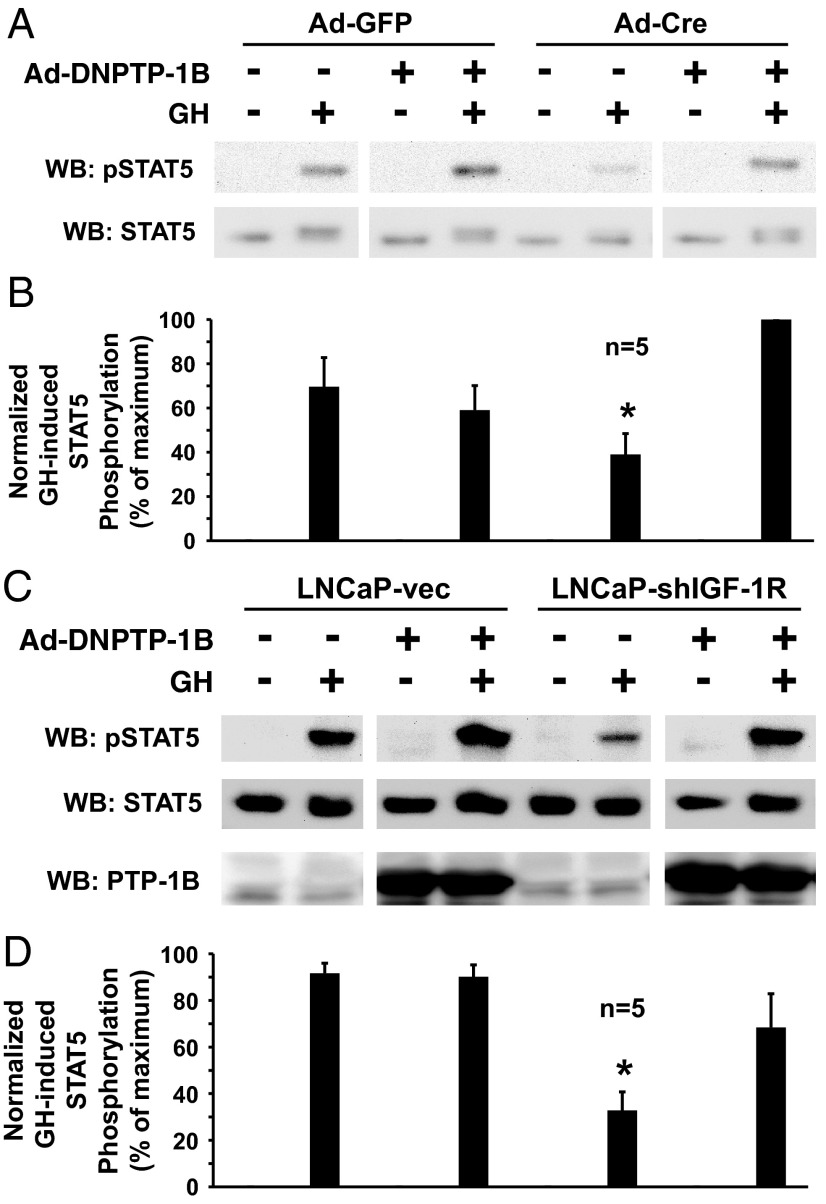Figure 5.
A dominant-negative mutant PTP-1B rescues the diminished GH-induced STAT5 phosphorylation resulting from IGF-1R depletion. A and B, Primary osteoblasts were infected with Ad-Cre vs Ad-GFP, as indicated, and Ad-DNPTP-1B (+) or Ad-GFP (−), as indicated. Serum-starved cells were treated with GH (+; 250 ng/mL) or vehicle (−) for 10 minutes. Detergent cell extracts were resolved by SDS-PAGE and immunoblotted with anti-pSTAT5, anti-STAT5, and anti-PTP-1B. A, Representative immunoblots. WB, Western blotting. B, Densitometric quantitation of pSTAT5/STAT5 signals from GH-treated samples from five independent experiments (including that shown in A). In each experiment, the maximum signal was considered 100%. Data are plotted as mean ± SE. *, P < .04 for comparison of Ad-Cre-infected, non-Ad-DNPTP-1B-infected, GH-treated group with either the Ad-GFP-infected, non-Ad-DNPTP-1B-infected, GH-treated group or the Ad-Cre-infected, Ad-DNPTP-1B-infected, GH-treated group. C and D, LNCaP-vec and LNCaP-shIGF-1R cells were infected with Ad-DNPTP-1B (+) or Ad-GFP (−), as indicated. Serum-starved cells were treated with GH (+; 250 ng/mL) or vehicle (−) for 10 minutes. Detergent cell extracts were resolved by SDS-PAGE and serially immunoblotted with anti-pSTAT5 and anti-STAT5. C, Representative immunoblots. D, Densitometric quantitation of pSTAT5/STAT5 signals from GH-treated samples from five independent experiments is displayed. In each experiment, the maximum signal was considered 100%. Data are plotted as mean ± SE. *, P < .03 for comparison of the LNCaP-shIGF-1R, non-Ad-DNPTP1B-infected group with any of the other GH-treated groups.

